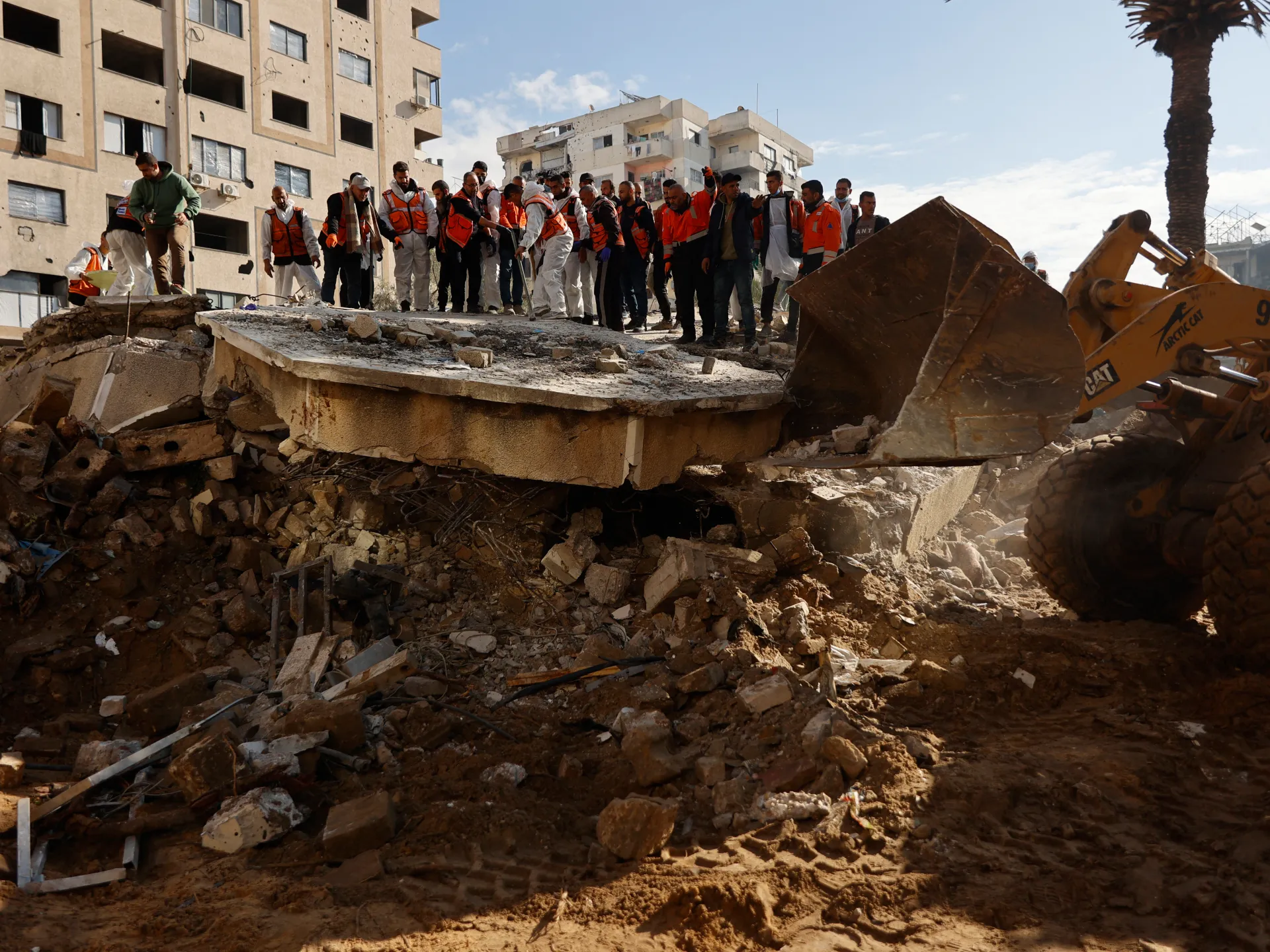Authorities in Gaza have warned that stormy weather could spur more war-damaged buildings to collapse and heavy rains are making it more difficult to recover bodies still under the rubble.
Authorities sounded the alarm on Monday, three days after two buildings collapsed in Gaza, killing at least 12 people, during winter rains that have also washed away and flooded the tents of displaced Palestinians and led to deaths from exposure.
Recommended Stories
list of 4 itemsend of list
A ceasefire has been in effect since October 10 after two years of Israel’s genocidal war against the Palestinian people in Gaza, but humanitarian agencies said Israel is letting very little aid into the enclave, where nearly the entire population has been displaced.
Al Jazeera’s Tareq Abou Azzoum said despite a shortage of equipment and fuel and the weather conditions in the enclave, Palestinian Civil Defence teams retrieved the bodies of 20 people on Monday.
The bodies were recovered from a multistorey building bombed in December 2023 where about 60 people, including 30 children, were believed to be sheltering.
Gaza Civil Defence spokesman Mahmoud Basal called on the international community to provide mobile homes and caravans for displaced Palestinians rather than tents.
“If people are not protected today, we will witness more victims, more killing of people, children, women, entire families inside these buildings,” he said.
Father mourns children killed in building collapse
Mohammad Nassar and his family were living in a six-storey building that was badly damaged by Israeli strikes earlier in the war and collapsed in heavy rain on Friday.
His family had struggled to find alternative accommodation and had been flooded out while living in a tent during a previous bout of bad weather. Nassar went out to buy some necessities on Friday and returned to a scene of carnage as rescue workers struggled to pull bodies from the rubble.
“I saw my son’s hand sticking out from under the ground. It was the scene that affected me the most. My son under the ground and we are unable to get him out,” Nassar said. His son, 15, died as did a daughter, aged 18.
Exposure warning
The head of the United Nations agency for Palestinian refugees warned on Monday that more aid must be allowed into Gaza without delay to prevent putting more displaced families at serious risk.
“With heavy rain and cold brought in by Storm Byron [late last week], people in the Gaza Strip are freezing to death,” UNRWA Commissioner General Philippe Lazzarini posted on X.
“The waterlogged ruins where they are sheltering are collapsing, causing even more exposure to cold,” he added.
Lazzarini said UNRWA has supplies that have waited for months to enter Gaza that he said would cover the needs of hundreds of thousands of Gaza’s more than two million people.
UN and Palestinian officials said at least 300,000 new tents are urgently needed for the roughly 1.5 million people still displaced. Most existing shelters are worn out or made of thin plastic and cloth sheeting.
Gaza authorities, meanwhile, were still digging to recover about 9,000 bodies they estimated remain buried in rubble from Israeli bombing during the war, but the lack of machinery is slowing down the process, spokesman Ismail al-Thawabta said.
Azzoum reported that Civil Defence teams said they require a surge in heavy machinery to expedite the work.
“They are saying that they are still in need, initially, for 40 excavators and bulldozers in order to achieve some slight progress in the whole process on the ground,” Azzoum said, reporting from Gaza City.
Israel’s continuing ban on the entry of heavy machinery into the Gaza Strip is a violation of the ceasefire, he added.
Earlier on Sunday, Hamas said Israel’s continuing violations of the ceasefire risk jeopardising the agreement and progress towards the next stage of United States President Donald Trump’s plan to end the war.
Since the ceasefire began, Israel has continued to strike Gaza on a daily basis, carrying out nearly 800 attacks and killing nearly 400 people, according to authorities in Gaza, while blocking the free flow of humanitarian aid.
“There is no real sense of safety nor protection for families,” Azzoum said of the ongoing violations.


